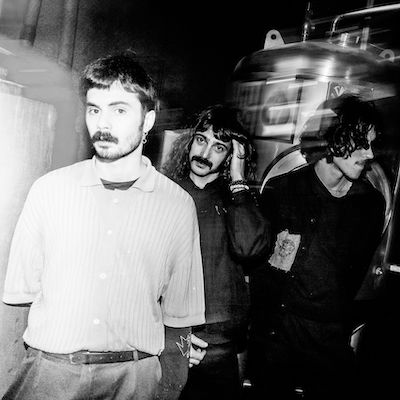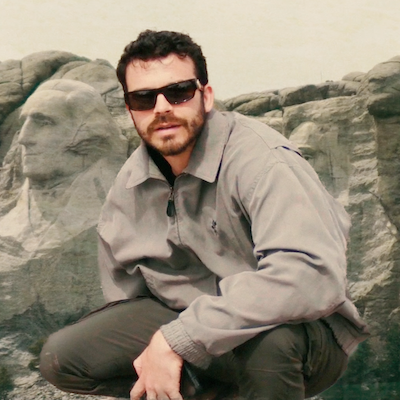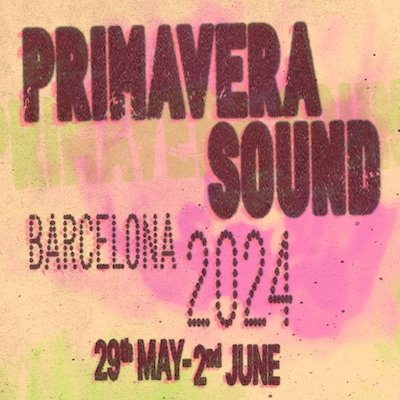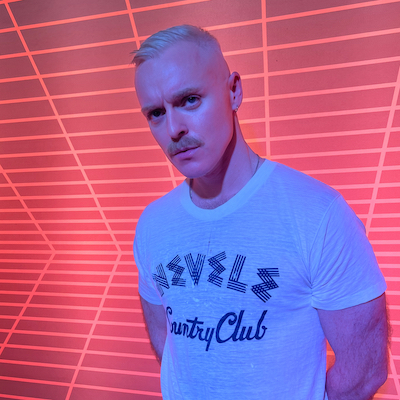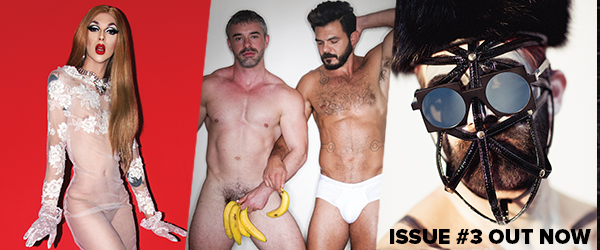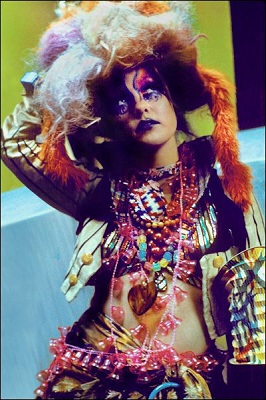
"I got arrested right off the plane. Bette Midler bailed me out the next day"
Loverboy is all about celebrating our queer history and it doesn’t get more fabulous than San Francisco performance troupe The Cockettes who reigned in the 70s and included in their number Sylvester and Divine. The latter performed a song called ‘A Crab On Your Anus Means You’re Loved’ whilst dressed as a lobster. This month the glorious Horse Hospital is screening an evening of Cockettes On Film with original Cockette Fayetta (aka Fayette Hauser) narrating one of the movies. Fayette is much, much more than just the Cockettes though. Fallon Gold spoke with her hero about the wonderful world of Fayetta.
Fayette, you have had the most extraordinary life and been a part of so many key moments in history: Andy Warhol’s factory, the New York punk scene, San Francisco counter culture. Was it the case of right place, right time or was it because you were always drawn to the subcultural underground, the freaks, and the outsiders?
I definitely feel that I was born at the right time and in the right place, for me that is. I grew up by the beach, in New Jersey during the 60’s. My family was very cultural, my Dad’s parents were both artists and we were so close to Manhattan that even as a child I was there all the time. I thought Manhattan was the Mecca of the World, everything that was anything was going on there and it only got better as the 60’s opened up. By the time I could drive a car I spent every minute I could wandering the city streets, seeking out all the avant garde culture I could soak up. I was very drawn to all the cutting edge culture that pervaded the city although I had to ferret it out. During the week I would comb the newspaper for gallery shows, theater and film events and then come Saturday I would jump into my Dad’s car and break the speed limit getting into the city. I found myself in Jack Smith’s loft, Andy Warhol’s Factory and just about every wild scene I could. My older brother Tim was into all the music scenes so we would go to the night clubs in the Village, even tho’ I was still underage. It was easy to meet people and get turned on to things as this was all very subterranean, very open.
Tell us how you became part of radical artist colony, The Family Dog.
This turn of events was Fate indeed. Going “On The Road” was the thing to do if you were a hippie, especially during the summer. I went to Aspen Colorado in the summer of 1968 which was, at that time, a hippie destination. I went there to paint and I set up a little camp in the mountains. One day I was picked up hitchhiking by Nancy Gurley, the wife of James Gurley, the guitarist for Big Brother. She changed the course of my life when she brought me to San Francisco and into the arms of The Family Dog. I felt I had landed in Paradise!
The scene by then was quite developed and creatively fertile. San Francisco in ’68 was so intense, very kinetic. You could feel the energy in the air, an energy that I had never felt before, or since for that matter. Hallucinogenics were the du jour drug and all the action was on the streets. Everyone was very open with each other.
The Family Dog was one of the original tribes in San Francisco, originating in North Beach and eventually into the Haight. They began the music scene and were so influential in just about every aspect of the culture. I feel that I got my Doctorate in Cosmic Consciousness from Nancy Gurley, Chet Helms and the Family Dog.
How did The Cockettes happen?
The Cockettes came together in a very organic way. Everyone in San Francisco was living communally in one way or another, some were formal communes but others were just groups living together in one of the vast Victorian flats that were all over the Haight and the surrounding neighborhoods. The straight population preferred the suburbs, hippies actually saved the Victorians from the wrecking ball.
We were all artists that were living together in a flat in the Haight and all of us would dress up in our best drag and go out as a group to the concert halls, every night. Our group grew as you can well imagine as we were fabulous from the start. Hibiscus came to us one day and asked to move in. He was so beautiful, obviously one of us, so of course in he came. He was an actor from a theater family that was involved in the underground theatre scene in lower Manhattan and he wanted to create a New Theatre. It was why he came to us. He presented his idea and we leaped at it. Our main ethos was Beauty in all its forms and Fantasy, the more imaginative the better. And of course, Truth. The entire Counter Culture had really removed itself from mainstream culture as it was such a lie. We wanted to tell the Truth.
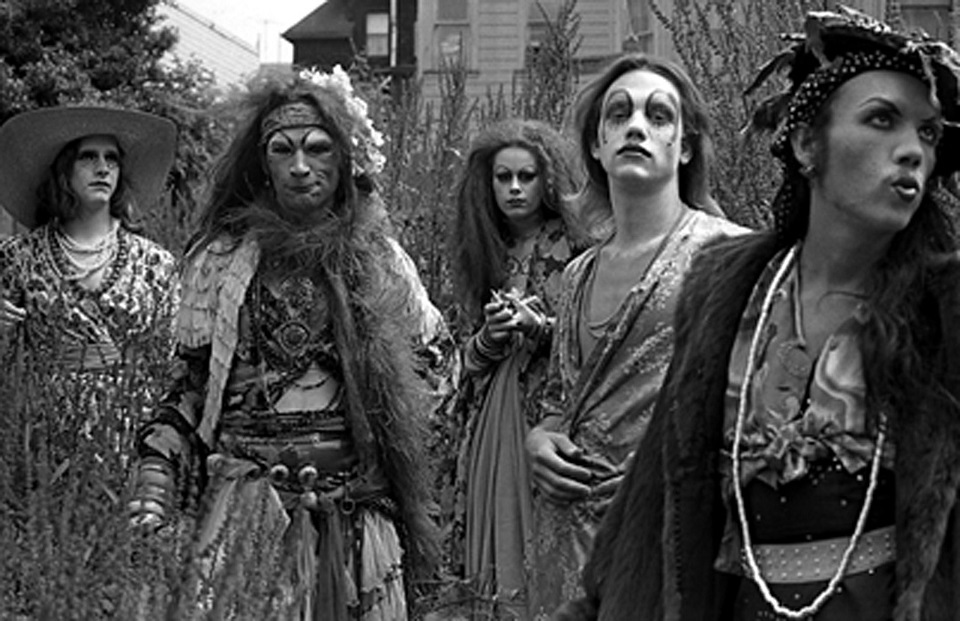
You were key – not only in being a founding member and performer with the group – but in creating the costumes and documenting the troupe through your outstanding photography. Did it feel like you were making and capturing a very special queer moment? I know you wouldn’t have called it queer then but it was more than ‘gay’, wasn’t it?
I had a very definite vision that came from a lot of art theory that I had learned in art school and from my own seeking out of the new which was subsequently put into the stratospheric, fourth dimension via hallucinogenics. It all became very real to me. I had a lot to say and I wanted to do it on my body. This was our common thread, a personal vision worn for all to see.
I knew this was an incredibly special moment and I couldn’t make it or capture it fast enough. It all went at a breakneck speed. We were at it every moment. It was also our personal challenge to come up with something new all the time so if you repeated a “look” you were dished!
The gender aspect was really a part of the greater whole. The word “gay” wasn’t even in the lexicon yet. All human aspects were embraced, it was so fluid. The more unique you were, the better. The Cockettes were very bi-sexual. We were all in love with each other! We had a very deep bond.
When we created our unique and original visual language it became very liberating for the subculture of drag artists and really launched them out of the closet and into the modern world.
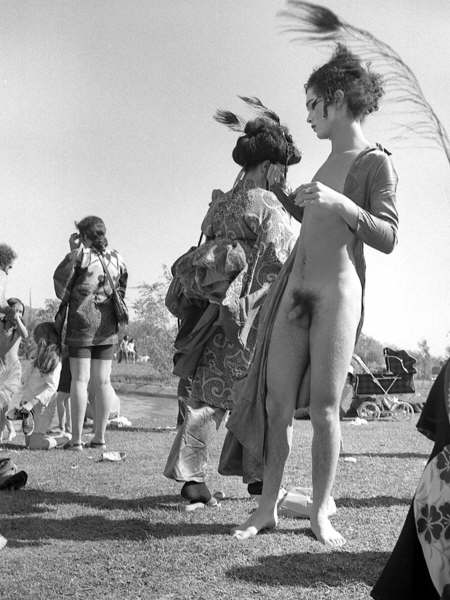
You had some unusual fans such as John Lennon and Marlene Dietrich.
Our shows were very popular as they were so different. Each show was unique in itself as we strived to be experimental so anything could happen onstage and usually did. All the fabulous artists who were anywhere near where we played came to our show. John Lennon and Marlene Dietrich came to our NYC show but sadly I never met them. Sometimes they would come backstage but you can only imagine the chaos going on there! Some artists like David Bowie, Iggy Pop and Alice Cooper came often, also visiting our house. After seeing our show Alice Cooper said, “I really have to up my stage game!”
I think we influenced a lot of artists and turned one wild page in American culture.
You worked with Bette Midler at – I would argue – the most brilliant time in her career. You’re responsible for those amazing costumes. How did that meeting come about? She wasn’t really like anyone else at the time, was she, in terms of her style, humour, and sheer force of nature?
Bette came to see the Cockettes show when we were in Manhattan in the Fall of 1971. She and my older brother Tim were pals and he brought her to see the show. They were both into the same early jazz musical eras and were starting to perform in Manhattan, Tim with his brilliant vocal group The Manhattan Transfer and Bette with her one-woman show. So Bette and I became friends just as she was appearing on the Johnny Carson show. Carson was mentoring her and booked her as his opening act at the Sahara in Las Vegas in the Spring of 1972. Bette really wanted to knock ’em out so she asked me to come to Vegas and style her for the show. “Bring your greatest drag” she said. So I shipped my Cockettes steamer trunk full of drag to the Sahara and followed on the next flight. But I was way too outrageous for Vegas and got arrested right off the plane, from the airport to the county jail! Bette bailed me out the next day.
After that initiation I was challenged to really bring it on so I dressed both Bette and myself every day in fabulous drag to trip out in the casinos. Then at night I styled Bette to the hilt, something different for every show. Johnny Carson’s eyes got wider each night. He never spoke to me.
I would watch Bette perform from the stage wing and I knew she would become a great star. She leaped onto the stage like a bombshell in her tiny gold glittered come-fuck-me-pumps. Her fabulous energy, voice and wit was all there, full tilt, right from the start. She’s the best.
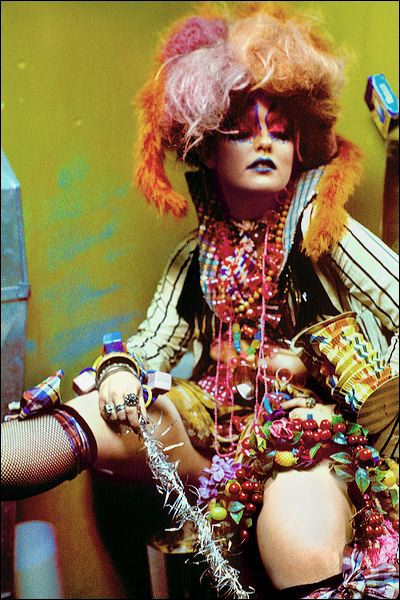
You’ve clothed quite a few other big stars with your Wearable Art couture.
While I was performing in Underground Theatre in New York City, 1973-74 with Tomata du Plenty and other members of the Cockettes and Whiz Kidz, I was also costuming my brother Tim’s new group The Manhattan Transfer, along with Bette Midler. Then in 1975 we all moved to Los Angeles where I began a Wearable Art fashion line of decorated vests and hats. I sold these to The Rolling Stones, Diana Ross, New Kids On The Block, Arsenio Hall and many others. I also began to work in film and theatre as a Costume Designer and I won two Dramalogue Awards for the plays A View From the Bridge and Detective Story, both at the Lee Strasberg Institute.
For the past few years we’ve been seeing a resurgence of ‘alternative’ drag and subversive cabaret that is very reminiscent of the work The Cockettes were doing. Do you see this as the legacy of The Cockettes?
Absolutely. I feel we opened wide the door of Imaginative High Drag that included both references to past eras in design as well as surrealism as a visual drag language. It’s only taken 45 years for everyone to catch up!
Many new movements are well into the Cockettes pipeline; New Burlesque, Cirque and lots of great Freak Theatre that I see emerging. So much freedom is now at the fingertips of new emerging artists that was previously not available. I feel our legacy is alive and thriving!
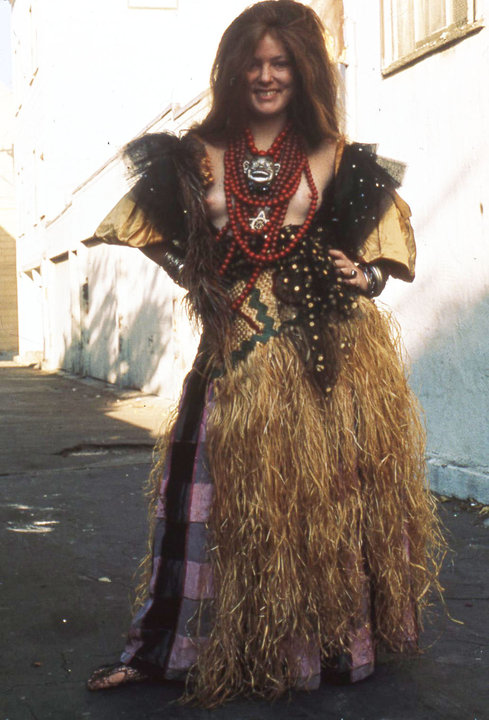
What can we expect from The Cockettes On Film at The Horse Hospital?
I’m going to talk a bit about the history of the group and also narrate the film Palace which is the only live footage of us onstage, it’s the Halloween show 1970, Les Ghouls. Then I’ll also be screening the films Tricia’s Wedding, a satire on the White House Wedding of Tricia Nixon starring The Cockettes and Elevator Girls in Bondage, also starring The Cockettes.
These films really raise the Freak Flag high, high!
I will also be bringing some memorabilia goodies for sale, signed copies of the beautiful magazine ODDA that I did an interview for, some posters and one or two of our rare Paper Doll Book so be prepared!
Meet Fayette and watch an awesome evening of Cockettes fabulousness at The Horse Hospital 26 April
More Fayette at fayettehauser.com
Images: 1 & 4 by Roger Anderson, 2 & 3 by Fayette Hauser, 5 by Clay Geerdes



